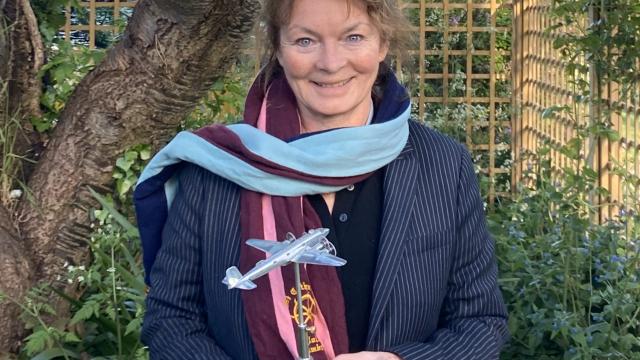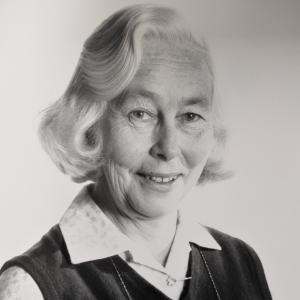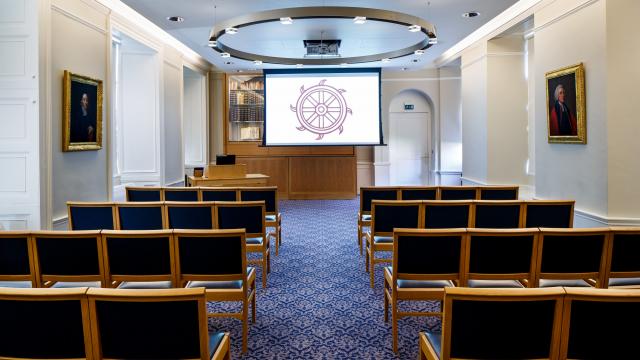
Date of election to the Fellowship: 1978
Life before Catz
Dr Marian Silver (née Scrase) was in the first cohort of women to receive University degrees in 1948. She was an exceptionally talented young woman who, by the time she was 18, had won a scholarship to the Slade school of Art as well as a place at Cambridge despite moving house and school 11 times. Her obituary in the 1994 edition of the St Catharine’s College Society Magazine explains how she distinguished herself at a young age after joining Newnham College to study Natural Sciences:
“After coming up to Newnham as an Exhibitioner, she gained a First in both parts of the Natural Sciences Tripos: her First in Zoology Part II was, at that time, a mark of great academic prowess. After a year as a Research Fellow of Newnham, she was selected under a scheme to attract the most able young scientists into pre-clinical subjects. This involved a year in the then active physiological laboratory in Edinburgh followed by two years at Reading, then at the height of its fame in Dairy Science, which lead to her PhD.”
Marian married Ian Silver (now Emeritus Professor in Comparative Pathology at the University of Bristol) in 1950, and two years later they moved together to Cambridge.
Research activities
Dr Silver initially worked at the Department of Zoology on an Agricultural Research Council (ARC) Fellowship. For most of her career, however, she was based at the University’s Physiological Laboratory, now the Department of Physiology, Development and Neuroscience. The Magazine obituary (and her research collaborators) comment:
“Within a year or so she was appointed to her first post, and after promotion spent thirty happy and productive years as Assistant Director of Research. She was in fact the first woman to be appointed to a University post in the Laboratory as opposed to College appointments. She made many contributions to physiology. Her research was largely spent in investigating the many complex developmental changes that occur during the fetal and neonatal periods of life, a time of rapid and dramatic changes in physiology, not all of which are even yet clearly understood. Her work in Cambridge began with the study of the output of the catecholamine stress hormones from the fetal adrenal gland and extended over time to include many other fetal organs and physiological systems. She pioneered new experimental techniques to follow fetal development in utero across a wide range of different species. She was particularly interested in fetal and neonatal nutrition and in how the preparations for delivery were controlled by fetal and maternal hormones. She enlarged the scope of the whole field of fetal and neonatal physiology and, by extending her investigations to many species, she has an important role in establishing the general principles that guide our understanding of the physiological changes at birth and of the maturational processes that ensure a successful transition to extrauterine life. In all this she had the enviable trait of great manual dexterity and experimental skill matched by an ability to concentrate for long hours on analysing results and writing the ensuing scientific papers with great fluency and style.”
In a paper in honour of Dr Silver, published in the journal Equine Reproduction in 1995, Dr Michelle LeBlanc highlighted many of the key discoveries Marian had made that elucidated the physiological mechanisms underlying fetal maturation. LeBlanc concluded:
“Much of what we know today about fetal maturation of the foal is due to Marian Silver’s tenacious efforts at perfecting the [technically demanding experimental approach].”
On the day before she died, Marian was greatly cheered by news of the acceptance of her latest research paper, a scientist to the end she was frustrated that it would be her last.
Life at Catz
Dr Silver was the first woman elected to the Fellowship at St Catharine’s. By the time of her election in 1978, she was already familiar with members of the College through her scientific collaborations, including with Dr Robert Comline (Fellow 1951–87) and Professor Peter Nathanielsz (1958, Natural Sciences).
During her time as a Fellow, she served as Tutor for four years and also supervised and helped undergraduates for three decades before and after her election. The Magazine obituary fondly recalls:
“Her gifts were by no means confined to the laboratory for she was a talented artist and a keen gardener. She will be remembered by members of the College for her scholarship, her natural elegance, and her quiet wit and her sense of humour.”
Family life
Dr Silver managed to combine her work as a dedicated and pioneering physiologist with having a family, though there was never any doubt that the science came first! Despite working full time she breastfed all 4 children, rushing home at lunchtime between lectures and the laboratory.
She was kind, fair, calm, modest and funny; she loved Monty Python, Mozart, fast cars and less fast skiing. Domesticity was low on her list of priorities, yet her children thrived, following in her slightly chaotic domestic wake.
She was welcoming and tolerant of the endless stream of friends, visiting academics and animals that passed through the house, only drawing the line when a piglet took up residence in the kitchen saying that it was too medieval.
She was a much loved and inspiring mother, aunt, daughter and wife, always cheerful and calm even when dealing with the competing demands of family and professional life before the days of mobile technology.




